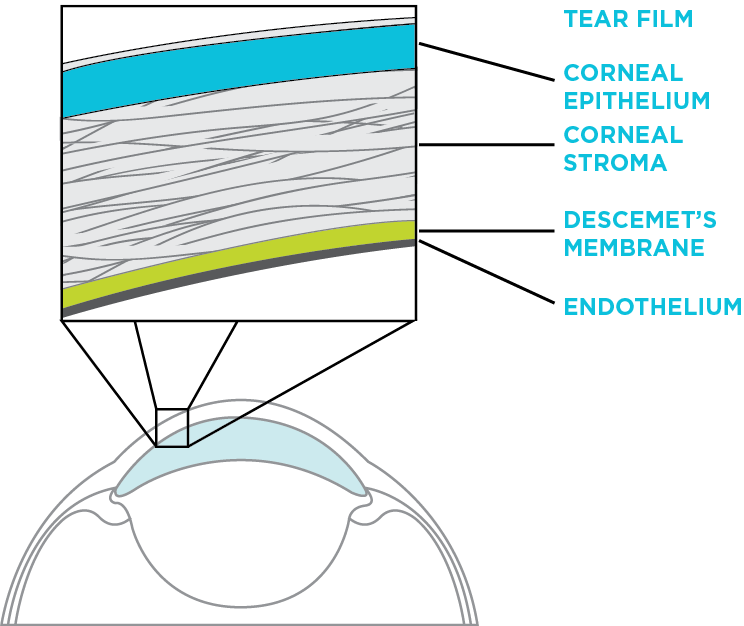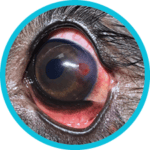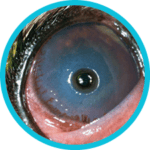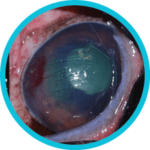Virtual Library | Corneal Ulcers and Treatment
The term ulcer indicates loss of corneal tissue resulting in an open wound on the surface of the eye. Ulcers can be classified as superficial or deep, depending on the amount of tissue that is lost. Such loss can involve just a few cell layers and heal very quickly, or it can affect the entire depth of the cornea, taking weeks or months to fully heal. Read on to learn more about corneal types and treatment.
← Flip through our digital brochure
So, You Brought Home a Bulldog
Cataracts and Cataract Surgery
Entropion Causes and Treatment
Feline Herpesvirus and Treatment
OFA Certification Registry Exams
Visit our blog, In Focus, to learn more about the pets we see, the treatments we offer and the services we provide to help your pet “see a better life.”
 The cornea is the clear dome on the surface of the eye. It is the major refractive surface of the eye, and problems in the cornea may lead to decreased vision. The cornea is covered by an outer protective tear film which is crucial for ocular surface health. It also has a robust nerve supply; therefore corneal problems can be very painful. The cornea is composed of three layers: epithelium, stroma, and endothelium (including Descemet’s membrane).
The cornea is the clear dome on the surface of the eye. It is the major refractive surface of the eye, and problems in the cornea may lead to decreased vision. The cornea is covered by an outer protective tear film which is crucial for ocular surface health. It also has a robust nerve supply; therefore corneal problems can be very painful. The cornea is composed of three layers: epithelium, stroma, and endothelium (including Descemet’s membrane). The term ulcer indicates loss of corneal tissue resulting in an open wound on the surface of the eye. Ulcers can be classified as superficial or deep, depending on the amount of tissue that is lost. Such loss can involve just a few cell layers and heal very quickly, or it can affect the entire depth of the cornea, taking weeks or months to fully heal.
The term ulcer indicates loss of corneal tissue resulting in an open wound on the surface of the eye. Ulcers can be classified as superficial or deep, depending on the amount of tissue that is lost. Such loss can involve just a few cell layers and heal very quickly, or it can affect the entire depth of the cornea, taking weeks or months to fully heal.
 SIMPLE
SIMPLE


